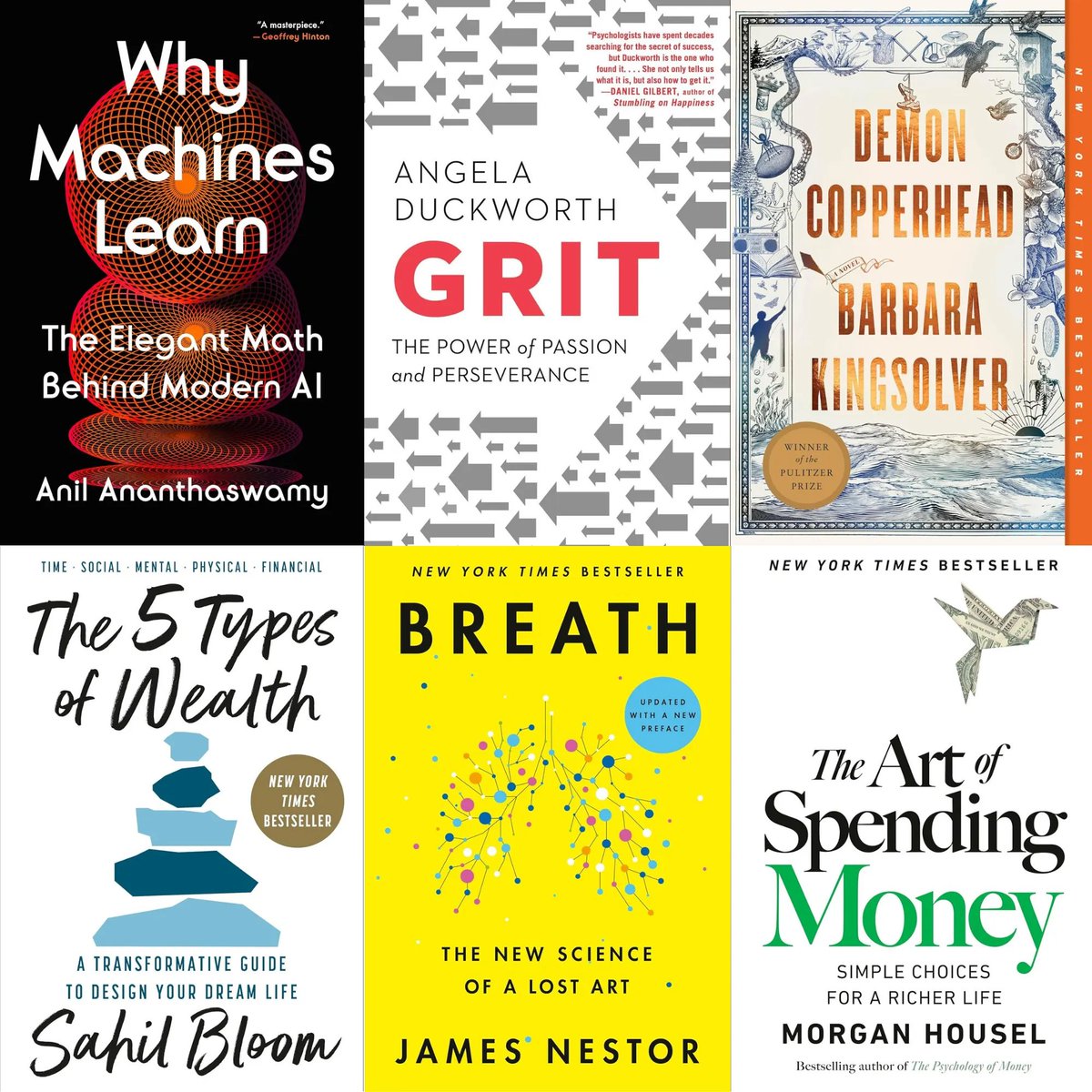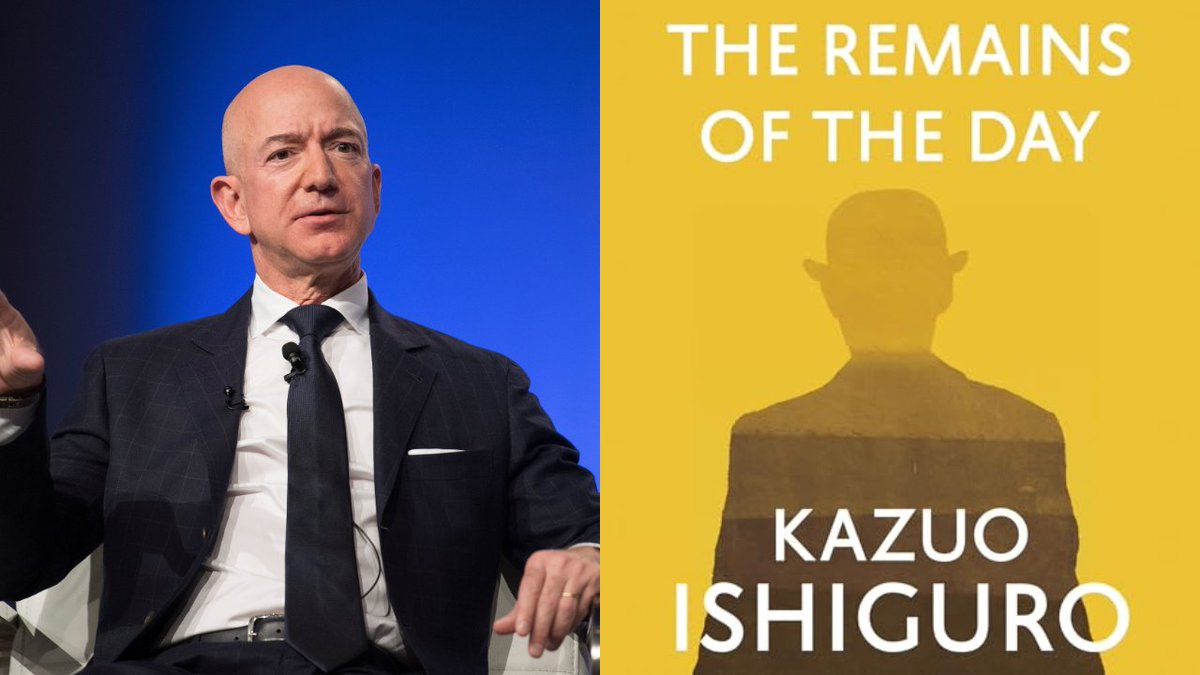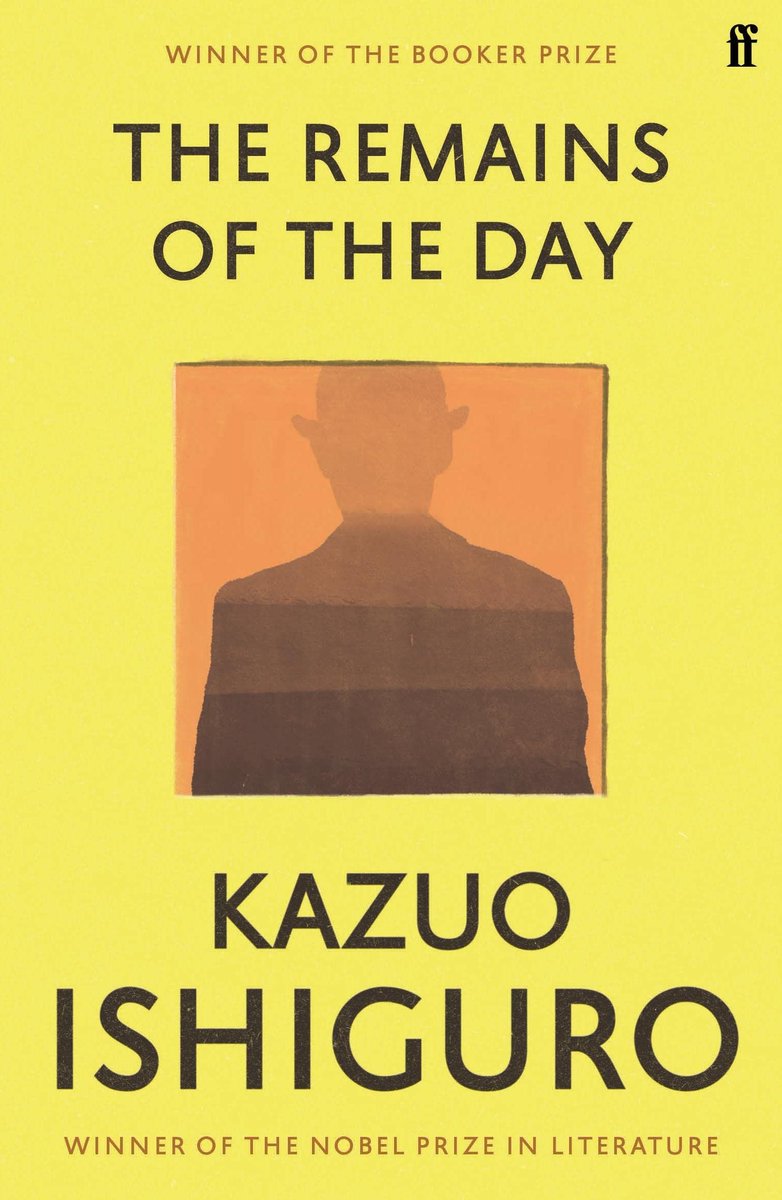Atomic Habits from @JamesClear changed my life.
In Atomic Habits, James lays out the Four Laws of Behavior Change.
1. Make it obvious
2. Make it attractive
3. Make it easy
4. Make it satisfying
Here's how to leverage them to build a daily writing habit (🧵✍🏼):
In Atomic Habits, James lays out the Four Laws of Behavior Change.
1. Make it obvious
2. Make it attractive
3. Make it easy
4. Make it satisfying
Here's how to leverage them to build a daily writing habit (🧵✍🏼):
Habits are made up of a four-part feedback loop:
1. Cue
2. Craving
3. Response
4. Reward
Building a habit means intentionally designing each part of this feedback loop.
1. Make it obvious
2. Make it attractive
3. Make it easy
4. Make it satisfying
1. Cue
2. Craving
3. Response
4. Reward
Building a habit means intentionally designing each part of this feedback loop.
1. Make it obvious
2. Make it attractive
3. Make it easy
4. Make it satisfying
https://twitter.com/JamesClear/status/1059507532006375424?s=20
Before you start to build a writing habit, it's important to understand the real goal.
Your goal isn't to start writing.
Your goal is to become a writer.
Why the subtle difference?
Because behavior change is identity change.
Your goal isn't to start writing.
Your goal is to become a writer.
Why the subtle difference?
Because behavior change is identity change.
We don't stick to habits that aren't aligned with our identity.
Luckily, habits that align with your identity are easy to stick to.
Every action you take is a vote for the type of person you want to become.
So to become a writer, we have to consistently cast "writer votes."
Luckily, habits that align with your identity are easy to stick to.
Every action you take is a vote for the type of person you want to become.
So to become a writer, we have to consistently cast "writer votes."
Step 1: Make it obvious
Time and location are the most important habit cues.
You MUST leverage them to build your writing habit.
Every great writer has their sacred hours.
This thread can help you find yours:
Time and location are the most important habit cues.
You MUST leverage them to build your writing habit.
Every great writer has their sacred hours.
This thread can help you find yours:
https://twitter.com/dickiebush/status/1333947082097512449?s=20
But just having a time of day to write isn't enough.
You want to intentionally design your writing environment to maximize focus.
Some good things to have:
• A go-to writing playlist
• A comfortable desk chair
• High-quality headphones
• Cold Turkey internet blocker
You want to intentionally design your writing environment to maximize focus.
Some good things to have:
• A go-to writing playlist
• A comfortable desk chair
• High-quality headphones
• Cold Turkey internet blocker
Step 2: Make it attractive
Habits with clearly defined benefits are easy to stick to.
So when building your writing habit, have a list of benefits you hope to unlock once you start writing consistently.
Review them every time you sit down to write.
Habits with clearly defined benefits are easy to stick to.
So when building your writing habit, have a list of benefits you hope to unlock once you start writing consistently.
Review them every time you sit down to write.
https://twitter.com/dickiebush/status/1368017828708777986?s=20
You also repeat habits that align with the social norm.
So if you want to start writing consistently, you want to surround yourself with other writers.
Seek to find a community that gives you approval, respect, praise, and feedback on your writing.
ship30for30.com
So if you want to start writing consistently, you want to surround yourself with other writers.
Seek to find a community that gives you approval, respect, praise, and feedback on your writing.
ship30for30.com
Step 3: Make it easy
Beginner writers think their first post has to change the world.
This kicks off the doom loop: procrastination disguised as planning.
How to overcome this?
Start smaller.
Beginner writers think their first post has to change the world.
This kicks off the doom loop: procrastination disguised as planning.
How to overcome this?
Start smaller.
Consistency comes from starting smaller.
Start with writing one tweet per day. Repeat this for a week.
Then, up it to a few tweets per day.
After a few weeks, you'll stop overthinking and overcome your fear of publishing.
From there, you can start to expand your ideas.
Start with writing one tweet per day. Repeat this for a week.
Then, up it to a few tweets per day.
After a few weeks, you'll stop overthinking and overcome your fear of publishing.
From there, you can start to expand your ideas.
Now your writing flywheel starts to spin.
You can go from writing tweets to writing short, Atomic Essays.
• One single idea
• Under 250 words
• Fits into a single iPhone screenshot
Again, we make it easy to keep publishing until we've built unmatched consistency.
You can go from writing tweets to writing short, Atomic Essays.
• One single idea
• Under 250 words
• Fits into a single iPhone screenshot
Again, we make it easy to keep publishing until we've built unmatched consistency.
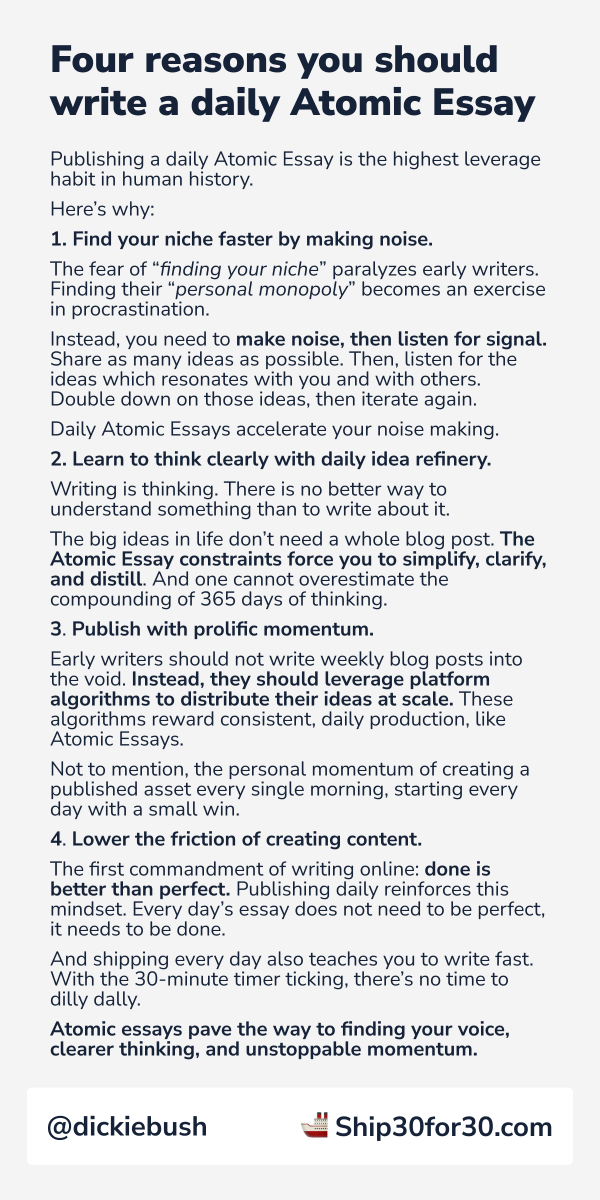
Step 4: Make it satisfying
Humans are simple dopamine chasers.
You want to find as many ways as possible to be "rewarded" every time you sit down to write.
The easiest way to do this?
Print out a giant calendar.
Make a big red X over each day you write and publish.
Humans are simple dopamine chasers.
You want to find as many ways as possible to be "rewarded" every time you sit down to write.
The easiest way to do this?
Print out a giant calendar.
Make a big red X over each day you write and publish.

In the beginning, you want nothing but positive reinforcement.
Another great way to do this: find an accountability partner.
Team up with someone also trying to build a daily writing habit.
• Share your struggles
• Cheer each other on
• Build a rock-solid relationship
Another great way to do this: find an accountability partner.
Team up with someone also trying to build a daily writing habit.
• Share your struggles
• Cheer each other on
• Build a rock-solid relationship
That's it!
The best writing habits are designed intentionally.
And following these four simple steps will make your writing habit inevitable.
The best writing habits are designed intentionally.
And following these four simple steps will make your writing habit inevitable.
And if you enjoyed this thread:
1) Follow me @dickiebush for more threads and resources for building your writing habit.
2) Check out Ship 30 for 30, the accountability and system you need to finally start writing online.
Ship30for30.com
1) Follow me @dickiebush for more threads and resources for building your writing habit.
2) Check out Ship 30 for 30, the accountability and system you need to finally start writing online.
Ship30for30.com
And for more threads on building your writing habit:
https://twitter.com/dickiebush/status/1368600658601938946
The scale of Twitter’s distribution never ceases to amaze me.
• 470k impressions
• 47k detail expands
• 10% “click through” rate showing there are many people who want to build a daily writing habit.
Share ideas, get market validation, double down (while adding value).
• 470k impressions
• 47k detail expands
• 10% “click through” rate showing there are many people who want to build a daily writing habit.
Share ideas, get market validation, double down (while adding value).
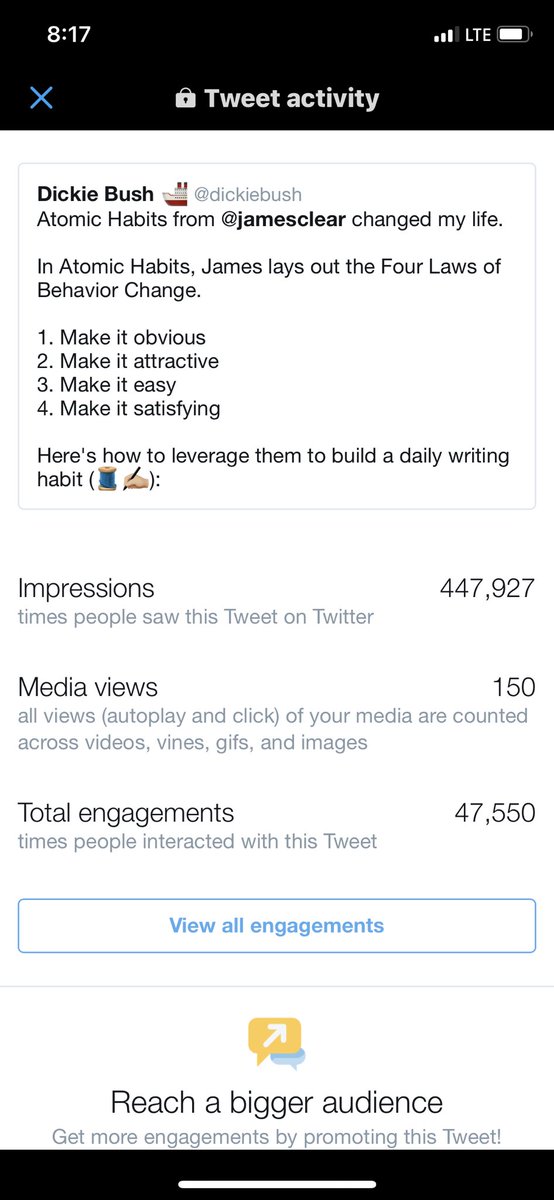
For those that prefer blog posts over threads, this is now available on the Ship 30 for 30 blog!
ship30for30.com/post/build-a-d…
ship30for30.com/post/build-a-d…
• • •
Missing some Tweet in this thread? You can try to
force a refresh


